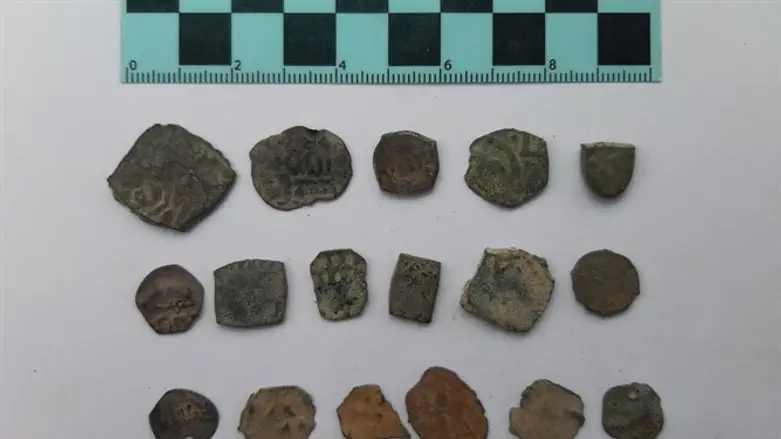
As part of the widespread activity led by the Civil Administration to curb the phenomenon of robbery of ancient artifacts in the Judea and Samaria area, members of the Coordination and Liaison Administration in Bethlehem returned rare archeological findings that were stolen from an archaeological site in the Bethlehem area.
The remains, which were returned on Monday, included various coins and objects dating to different periods in history, ranging from the Persian Period to the Ottoman Period.
It is believed that the findings belong to the Tel Battir site, where remains of a fortified community identified as the ancient Beitar were discovered.
Among the findings was a group of coins minted by Hasmonean King Alexander Yanai, which are decorated with stars and anchors. Also discovered is a coin of Archelaus, the son of Herod who ruled the area after his father's death, as well as a silver coin from the time of the Crusader Kingdom of Jerusalem.
In addition, a large number of Byzantine coins bearing a royal portrait on one side and various symbols, including crosses, on the other side, was returned.
The Head of the Civil Administration Archaeology Unit, Hanania Hizmi, said, "We are doing everything we can to prevent the devastating phenomenon of the robbery of ancient artifacts across Judea and Samaria. I am glad that today we were able to return and preserve remains of historical significance. The Civil Administration will continue to work tirelessly for the protection of national heritage assets and regional history."
